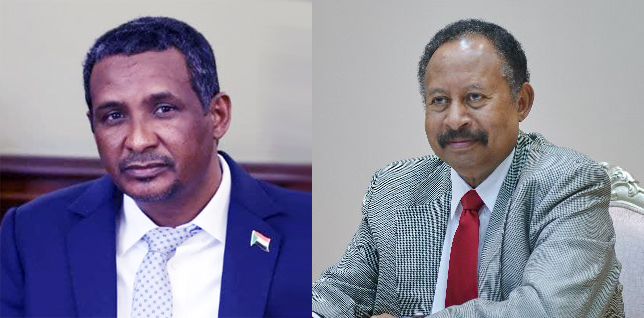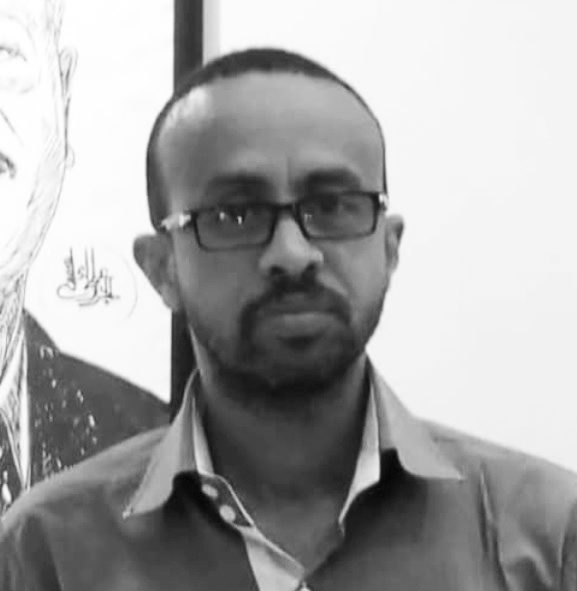
Addis Ababa Declaration: Discussion on ``Margins`` and ``Texts``
Khaled Massa
The "definition" in the preamble of the Addis Ababa Declaration, issued on January 2nd, between the Coordination of Civil Democratic Forces "Taqadom" and the Rapid Support Forces leadership, for the April war described it as "a comprehensive political framework for resolving the crisis, based on a vision of building a new Sudan that is just, inclusive, and respects diversity, addressing economic, social, and political challenges."
The preamble also explained the motivations that led the coordination and its components to take on the responsibility of seeking solutions to this war, stating, "Conscious of the urgent need to find a way out of the current crisis, and in response to the aspirations and demands of the Sudanese people for a comprehensive and just peace, we, the undersigned, have undertaken this initiative to initiate a political process that aims to address the root causes of the conflict and to build a democratic state that guarantees the rights and freedoms of all its citizens."
"Taqadom" identified the means and tools available to achieve the goals of this effort, stating that "political and military solution must be based on the principles of a comprehensive and just peace, national reconciliation, and the protection of civilians." It emphasized the importance of involving all Sudanese stakeholders, including political, civil, and youth groups, in the peace process.
Within the "definition," "motivations," and "means," the declaration does not exceed the limits of being a "human effort" that does not reach the perfection, making it open to criticism, especially since it addresses an issue concerning the entire Sudanese people, with specific rights that should not be decided and determined on behalf of anyone else. It tackles public issues that require "authorization," and one might argue that the coordination did not consider this when it went to Addis Ababa.
It is noteworthy that the Addis Ababa Declaration was published on all media platforms and summarized in the preamble, as mentioned earlier, in addition to three main axes represented in "ceasefire, addressing economic challenges, and humanitarian aid and civilian protection." The details of this axis were elaborated in 9 points, representing the initiatives efforts to achieve the goals of the first axis.
This is the "text" in the first axis of the agreement, and it is unlikely that any mind looking at the months of the past war and its impact on the Sudanese people can ignore the urgent need to achieve the goals of this axis. Discussing the details of these points is more valuable and important than getting involved in the "margins" of social encounters. Imagine that negotiations to stop a war between two parties could take place without communicating with the warring parties, as this is a fundamental aspect of negotiations. The evidence for this is that the Sudanese armed forces themselves went to Jeddah as a matter of responsibility.
In light of the conditions experienced by the Sudanese people due to the war, the discussion should focus on the text of the ceasefire and the economic recovery, addressing its eight points by deletion, addition, or modification instead of "demonizing" anyone taking a path to stop the war. It is important to avoid further polarization, revenge desires, and sentiments that prolong the duration of the war.
Turning away from discussing the "texts" and focusing on the "margins" of political intrigue in the Addis Ababa Declaration in a way we reject, even if it comes free from any flaw giving justification for doubting the motives behind the declaration.
The "texts" that we should address in the Addis Ababa Declaration, rather than the political intrigues and celebrations that have no place in the midst of the national crisis, are to remind Dr. Abdullah Hamdouk and those with him in "Taqadom" that the Sudanese people paid the cost of the fragility of the "constitutional document." Your shift to discussing the "margins" without the "texts" led us into the maze of the number of civilians versus military personnel in the Sovereign Council, the powers of the sovereign, and replacing the formation of the legislative council stipulated in the document with the partnership of the sovereign and the cabinet, until the disaster of dispersing the sit-in and then the same partnership was dissolved by the October 25th coup. So, we must learn from lessons.
The Coordination of Civil Democratic Forces "Taqadom" must understand that among its responsibilities is coordinating between all initiatives proposed to stop the war in Sudan because flooding the scene with platforms and initiatives would hinder peace efforts and increase polarization in the region and the region. We do not see substantial differences between what was reached in Jeddah and what came out of the meetings of neighboring countries or what "The EIGAD" worked on.
Regarding the third axis in the Addis Ababa Declaration, related to mechanisms, "Taqadom" should not rely entirely on the terminology store that addresses the emotions of revolutionaries with national committee labels. This is because the recent memory of the revolution is not on friendly terms with this type of labeling, as it is not sufficient to believe in the performance of tasks as required.
The "texts" in the story of war solutions do not lie in engaging in the windmills of war advocates but in spreading awareness and enlightenment about the content and goals of the declaration, creating the largest civilian alignment behind the "Taqadom" coordination to stop the war. As long as there is awareness and understanding of the parties with interests in expanding the war and cutting off the path to restoring the stability of the Sudanese state.
All the efforts of the coordination should be saved to complete the journey of the declaration by convincing the leadership of the Sudanese armed forces of the validity of the declaration to be the way to stop the war and lay the foundation for building the democratic civil transition.


